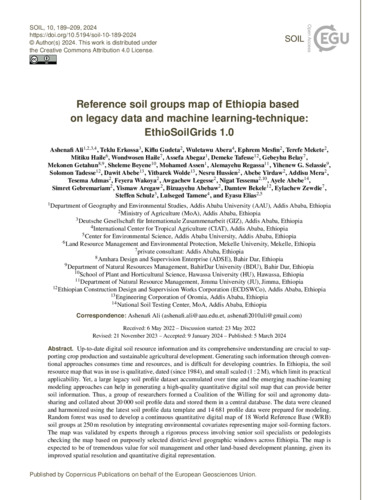Reference soil groups map of Ethiopia based on legacy data and machine learning-technique: EthioSoilGrids 1.0
Up-to-date digital soil resource information and its comprehensive understanding are crucial to supporting crop production and sustainable agricultural development. Generating such information through conventional approaches consumes time and resources, and is difficult for developing countries. In Ethiopia, the soil resource map that was in use is qualitative, dated (since 1984), and small scaled (1 : 2 M), which limit its practical applicability. Yet, a large legacy soil profile dataset accumulated over time and the emerging machine-learning modeling approaches can help in generating a high-quality quantitative digital soil map that can provide better soil information. Thus, a group of researchers formed a Coalition of the Willing for soil and agronomy data-sharing and collated about 20 000 soil profile data and stored them in a central database. The data were cleaned and harmonized using the latest soil profile data template and 14 681 profile data were prepared for modeling. Random forest was used to develop a continuous quantitative digital map of 18 World Reference Base (WRB) soil groups at 250 m resolution by integrating environmental covariates representing major soil-forming factors. The map was validated by experts through a rigorous process involving senior soil specialists or pedologists checking the map based on purposely selected district-level geographic windows across Ethiopia. The map is expected to be of tremendous value for soil management and other land-based development planning, given its improved spatial resolution and quantitative digital representation.

